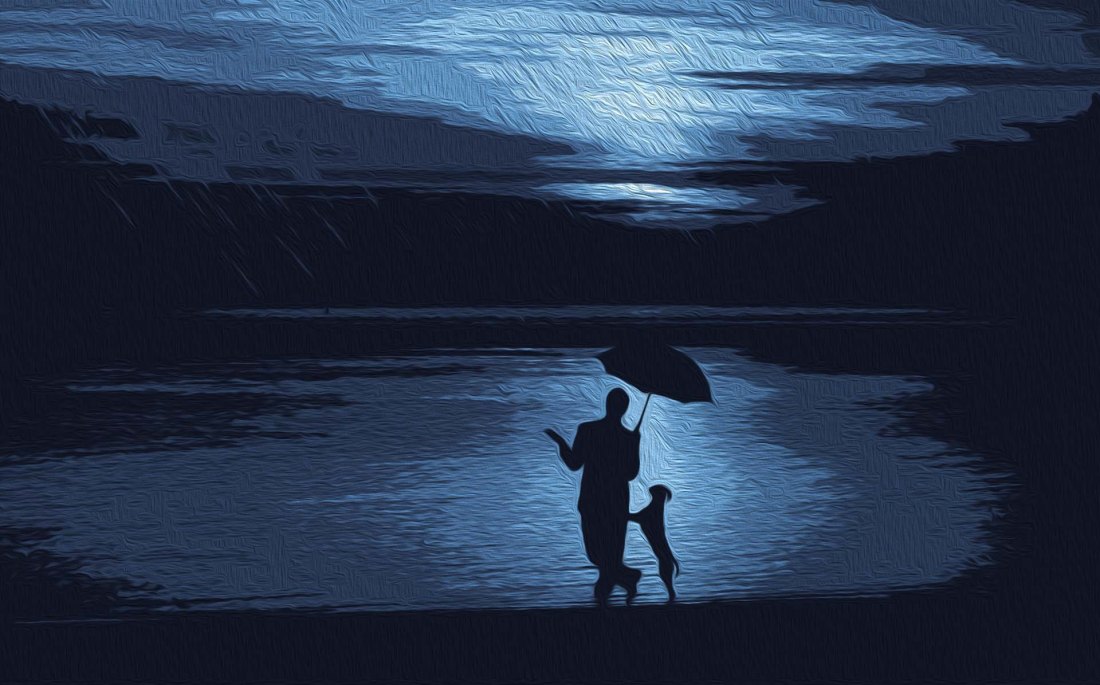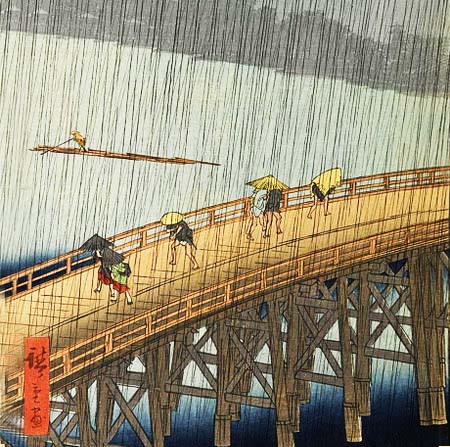Old pond – frogs jumps in – sound of water
Having heard Basho’s famous frog haiku, I became curious about other ancient Japanese frog stories. Here is an old folk story, which I have embellished, as all frogs do in telling stories.
Two Frogs
大坂のかわず京のかわず
Ōsaka no kawazu Kyō no kawazu
Osaka frog, Kyoto frog
Once upon a time there lived two frogs, one of whom made his home in a pond on the grounds of the Katsuo-ji Temple in Osaka, while the other dwelt in the Kyoko-chi pond of Kyoto. At such a great distance, they had never even heard of each other; but, funny enough, the idea simultaneously came into their heads that they should see a little of the world. Thus, the frog who lived at Kyoto wanted to visit Osaka, to visit Katsuo-ji’s many ponds and beautiful garden, and the frog who lived at Osaka wished to go to Kyoto, to visit the temple of Kinkaku-ji and its ponds, which likewise were deemed just as glorious.
On the first day of spring, as the sun rose over the tree tops, they both set out along the Nakasendo Way that led from Kyoto to Osaka, each from the opposite end. Since they were frogs, the journey was long, made up of quick hops and sudden stops. Their arms being much shorter and weaker than their long powerful legs, they found that it was the stomach and head that brought them to a stop. At Nakatsugawa, halfway on their journey, there was a tall a mountain which had to be climbed and crossed. It took a long time and a great many hops to reach the summit, but there they were at last, surprised to see another frog so far from water!
Surprise begets silence, but surprise soon becomes delight, and they fell into a merry conversation about the wonders or their cities – and, after a time, as they were tired and in no hurry to resume the journey, they retired to a cool, damp place, underneath a tall cedar tree, and agreed that they would have a good rest before they parted to go about their ways.
When morning came, each frog rose stretching their sore legs and scratching their bruised stomachs in preparation of continuing their journey. “What a pity we are not bigger,” said the Osaka frog; “for then we could see both towns from here and know if it is worth our while to go on.”
“Oh, that is easily managed,” replied the Kyoto frog. “We have only to stand up on our hind legs and hold onto each other, then we can each look at the town he is traveling to.”
This idea pleased the Osaka frog so much that he at once jumped up and put his front paws on the shoulder of his friend, who had also risen. There they both stood, stretching themselves as high as they could on their tiny toes and holding each other tightly so that they would not topple over. The Kyoto frog towards Osaka, and the Osaka frog to Kyoto; but the foolish creatures forgot that when they stood up on their toes with their heads held high, their large bulbous eyes stared behind. So it was that though their noses might point to the places they wanted to go, their eyes beheld the place from which they had come.
“Dear me!” cried the Osaka frog, “Kyoto is exactly like Osaka and certainly not worth a long journey. I shall go home!”
“If I had had any idea that Osaka was only a copy of Kyoto I should never have left home at all,” exclaimed the frog from Kyoto, and as he spoke he took his hands from his friend’s shoulders, and they both plopped down on the grass. With a polite farewell the two silly frogs set off for home again, none the wiser.
And to the end of their lives they believed that Osaka and Kyoto, which are as different to look at as two towns can be, were as alike as two peas in a pod.
Notes on translation
かわ kawa, river
ず zu, not knowing (anything)
かわず kawazu, ancient term for frog, because the frog, who prefers the pond, does not know the river







